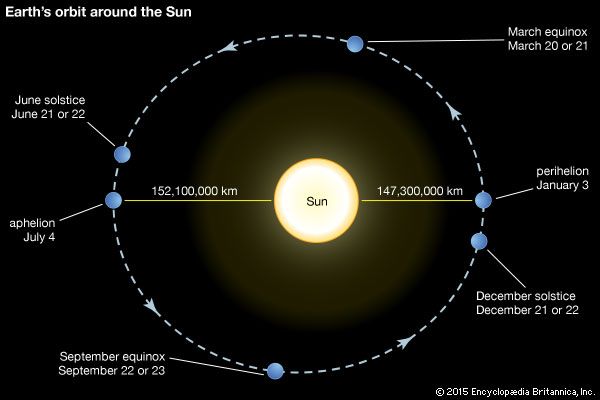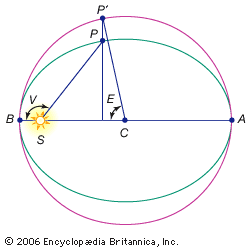aphelion
Our editors will review what you’ve submitted and determine whether to revise the article.
- Related Topics:
- orbital element
- apocentre
aphelion, in astronomy, the point in the orbit of a planet, comet, or other body most distant from the Sun. When Earth is at its aphelion in early July, it is about 4,800,000 km (3,000,000 miles) farther from the Sun than when at its perihelion in early January. Corresponding terms for describing the most distant orbital point of bodies moving around centres of force other than the Sun include apogee (for farthest point from Earth) and aposaturnium (for farthest point from Saturn). The apogee of Earth’s Moon, for instance, is about 50,000 km (31,000 miles) more distant from Earth than its closest orbital point (perigee). The word apocentre is a general term for the farthest point in a body’s orbit from the body it circles.
















